Camping on the Maine Coast – Acadia National Park
Before packing up and leaving our campsite in New Harbor, we prepared a pretty great pancake-and-maple-syrup breakfast. The night before we’d enjoyed a hot-dog-and-Budweiser dinner; this was clearly turning into an all-American road trip. I loved it.
It’s a three-hour coastal drive from New Harbor to Bar Harbor. The small town of Bar Harbor would be our base for the next three days and three nights.
It’s located on Mount Desert Island, the island’s liveliest tourist center. Bar Harbor’s stunning backdrop, Frenchman Bay, was what attracted wealthy American families to the area in the 19th century. We’re talking people like the Vanderbilts (who also had mansions in Newport, Rhode Island), the Rockefellers and the Astors.
The previously simple fishing village, home to lobstermen and shipbuilders, would never be the same again. It expanded into a playground for the rich and eventually became a famous tourist destination and a great gateway town to Acadia National Park.
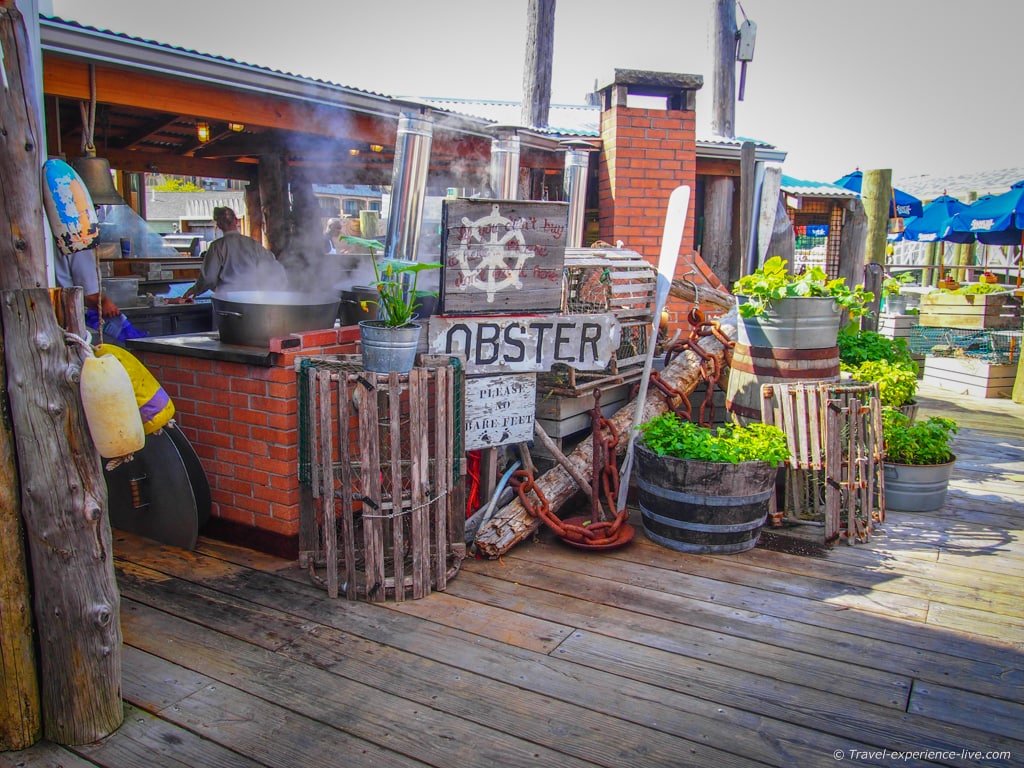
Bar Harbor
We arrived quite early, pitched our tent again and went to explore the town.
The first thing we did in Bar Harbor was find a place to eat lunch. Later, we walked the wonderful Shore Path, which starts at the pier and runs along the shore of Frenchman Bay.
It’s less than a mile long, but offers great views of the Atlantic Ocean and the Porcupine Islands to the left and stately homes to the right.
Before heading back to our campsite, we paid a visit to the local brewery – something we did in Portland and on Monhegan Island as well – sampled four different brews (in small glasses, by the way) and took home a full growler of the one we liked best.
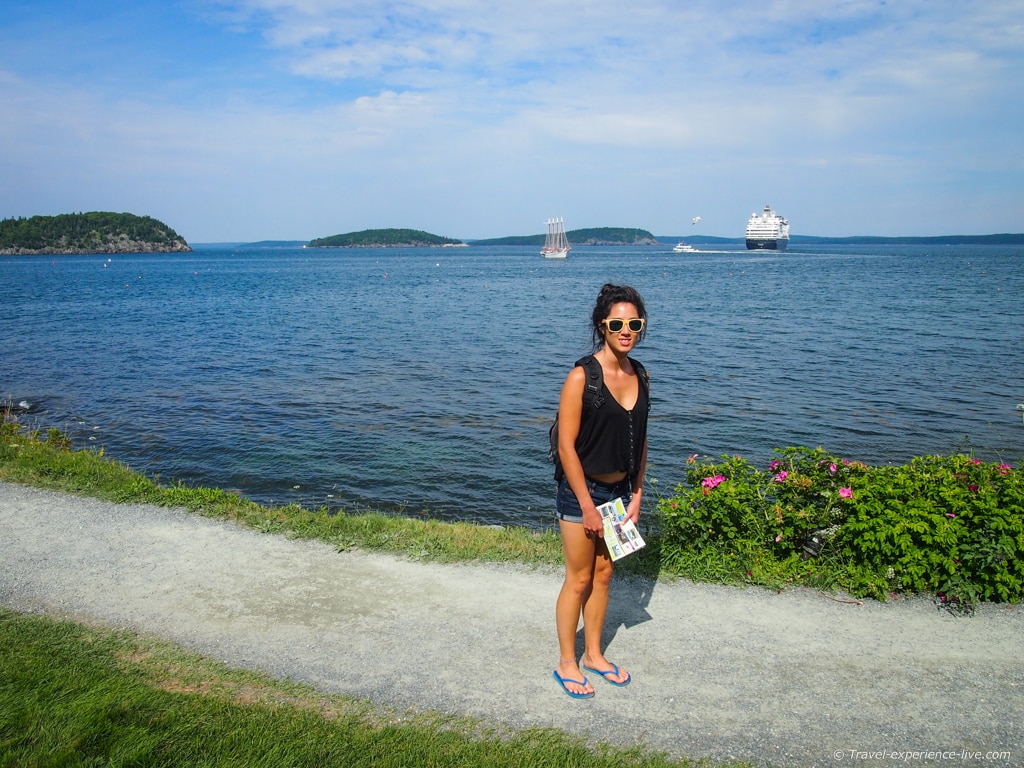
Acadia National Park
Although Bar Harbor was an extravagant place in the late 19th century, several of the rich summer vacationers made it their mission to preserve and secure the beautiful landscapes of Mount Desert Island.
In 1901 a public land trust was created by George B. Dorr and Charles W. Eliot, the president of Harvard University, with the aim of preserving Maine’s natural beauty.
They sent a petition to President Woodrow Wilson, asking him to establish a national park. He did so in 1916. The fabulous Acadia National Park was born. Incidentally, Acadia National Park was the first national park in the US east of the Mississippi.
At its start the national park covered only 6,000 acres. In the following years 11,000 acres were donated by John D. Rockefeller Jr. He also designed and built 45 miles (72km) of carriage roads, so people could enjoy the landscapes better.
So, it is thanks to the philanthropic acts of these wealthy people that Acadia National Park now covers almost half of Mount Desert Island and, most importantly, that we can still visit and enjoy the exquisite beauty of the area.
And people do visit; Acadia National Park gets more than two million visitors every year and is one of the most visited parks in the United States.
The next day we tackled the highest mountain on the east coast.
Cadillac Mountain – named after the French explorer Antoine Laumet de la Mothe, sieur de Cadillac, who would later found Detroit and lend his name to the famous automobile – can be climbed along the North Ridge Trail and the longer South Ridge Trail. We chose the latter.
The views along the exposed ridge and at the summit are sublime. It’s also possible to drive up to the summit, which in my opinion spoils the entire experience of a mountain summit, and there were hundreds of people walking around, cameras in hand.
We spent an hour at the summit, resting and enjoying the views before heading back down the same way. The roundtrip took about four hours.
In the afternoon we went for a drive around Mount Desert Island. Bar Harbor isn’t the only town on the island; other picturesque towns are Southwest Harbor, Northeast Harbor, Bass Harbor and Somesville.
In Bass Harbor we stopped to take a look at the famous Bass Head Lighthouse, a much-photographed lighthouse at the southernmost point of the island. It’s the subject of many a postcard.
On our third day on Mount Desert Island we decided to do some more hiking. The night before, next to the campfire, I had spent some time trying to figure out which hikes we could do. Caroline, however, saved her input until the following morning. We ended up doing one of the hikes I was trying to avoid at all costs.
The Precipice Trail is the steepest hiking trail in Acadia National Park. Despite being only a mile long, it’s by far the most challenging hike in the national park. In a mile it climbs almost 1,000 exposed vertical feet (300m).
It’s practically vertical and the hike is extremely strenuous. I don’t think I’ve ever sweated so much. The trail leads to the summit of Champlain Mountain and iron rungs and ladders help you get there.
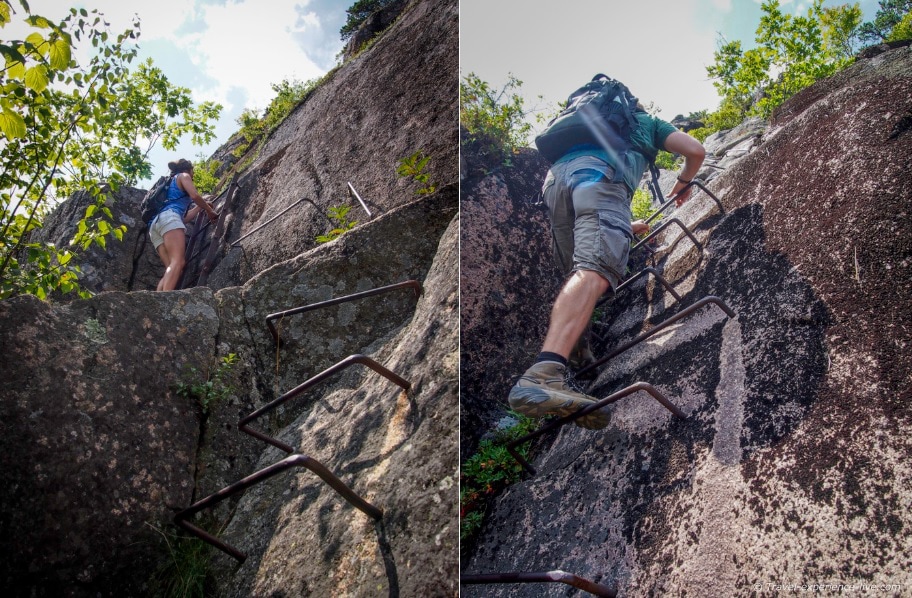
As you may or may not know, I’m scared of heights. This was definitely a very straight-forward way to overcome that fear. I can’t say that I wasn’t scared though. At times it was downright frightening.
Later, after we had made it back to our car safely, we drove to Sand Beach, a nice little beach located in between mountains, and spent a few hours sunbathing.
Swimming was out of the question, because the ocean temperature doesn’t exceed 55°F (13°C). We hiked the Great Head Trail, which is located at the eastern end of Sand Beach and loops through evergreen forest and along rocky sea cliffs.
People enjoying the sun on Sand BeachWe continued on the Park Loop Road towards the Thunder Hole. Apparently the best time to visit this attraction is just before high tide, when the surf enters the cave and thunders back out. We didn’t see or hear anything.
The Park Loop Road is a fabulous 27-mile (44km) drive around the national park. Officially it begins at the visitor center in Hulls Cove, but it can be entered at several other points. About two thirds of its length is one way.
To get to the Park Loop Road you need to buy an entry ticket ($20), which is valid for seven days. The road runs past all major highlights in Acadia National Park – the Sieur de Monts Spring, Precipice Trail, Sand Beach, the Thunder Hole, Jordan Pond and Cadillac Mountain are all located along the loop.
It’s a spectacular road with many great lookout points and trailheads.
We continued towards Jordan Pond, a beautiful still lake in the heart of Acadia National Park. We walked around for a bit – no long hike this time – took some pictures and drove to the starting point of the Bubbles Divide Trail, or Bubble Rock Trail.
This was another one of Caroline’s great ideas that day. It’s a short hike to the summit of South Bubble and Bubble Rock. Bubble Rock is arguably the most well-known rock in Maine.
It looks like it could fall off the mountain cliff at any time, but it’s actually quite well-balanced. You couldn’t push it off if you tried. From the summit there’s a great view down of Jordan Pond and the surrounding hills.
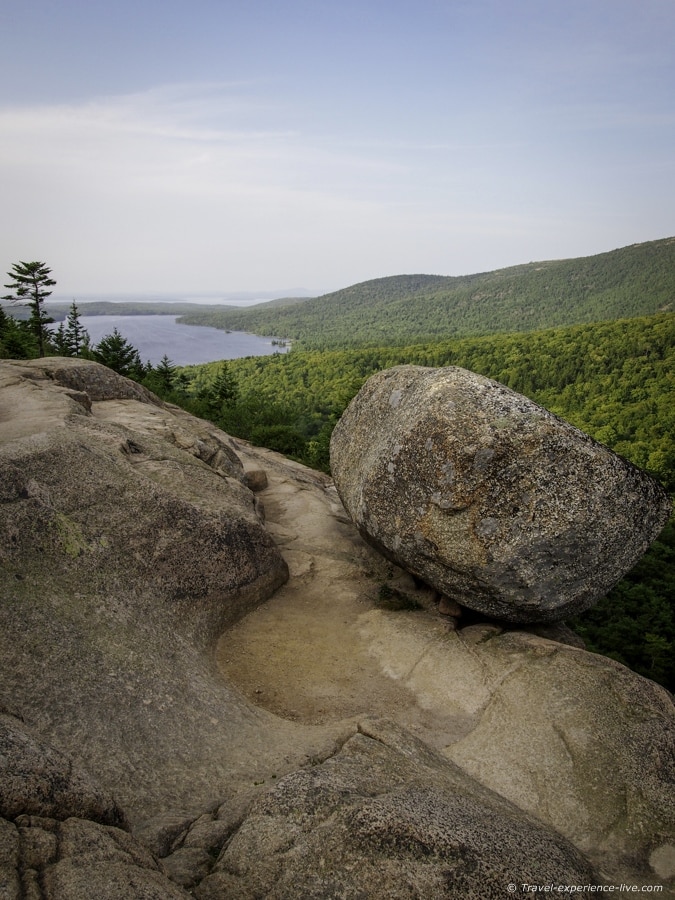
Exhausted after a long day of hiking and driving, we went back to our campsite, cooked dinner, had some beers and were sound asleep shortly after nightfall.

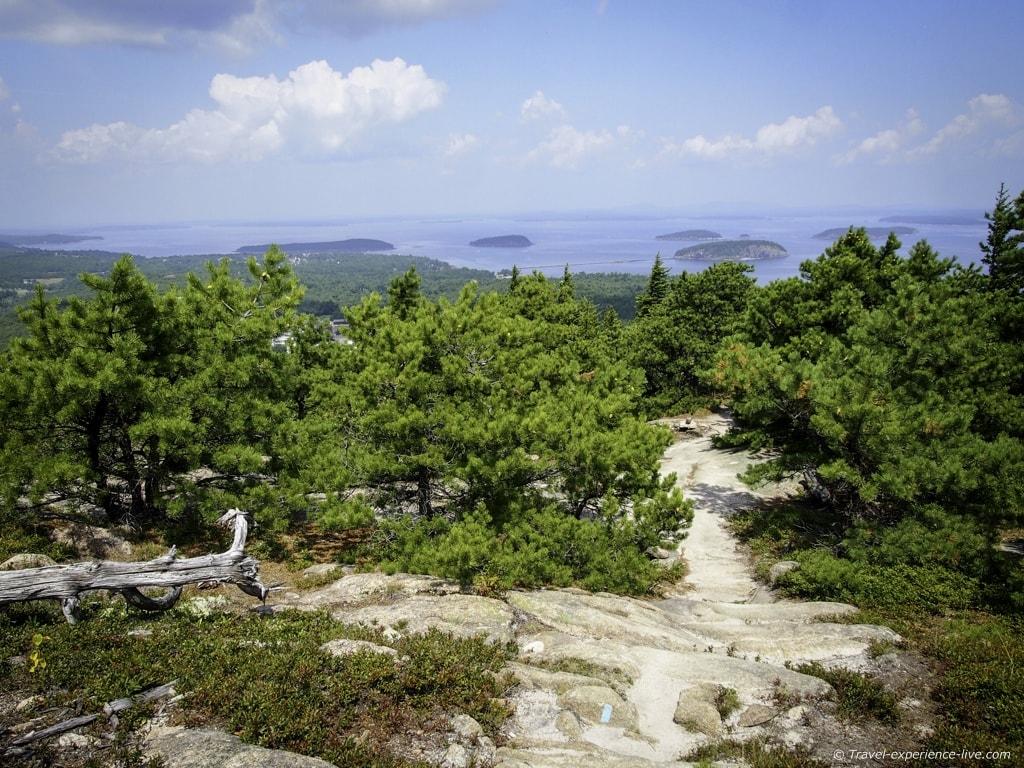













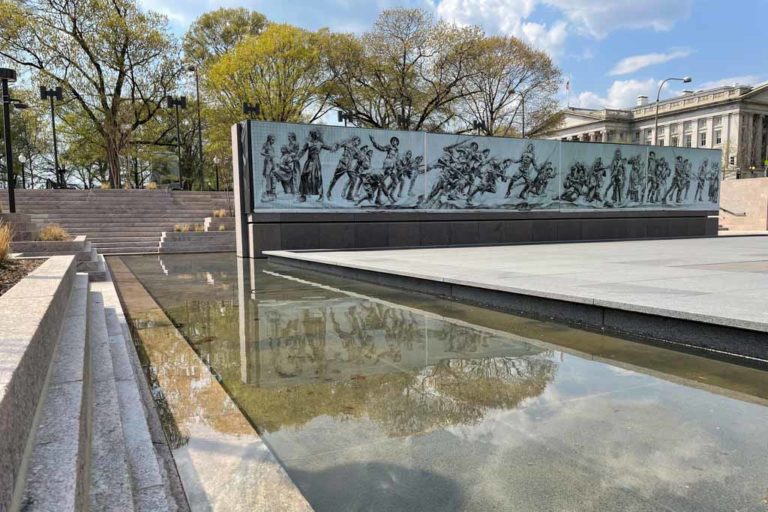

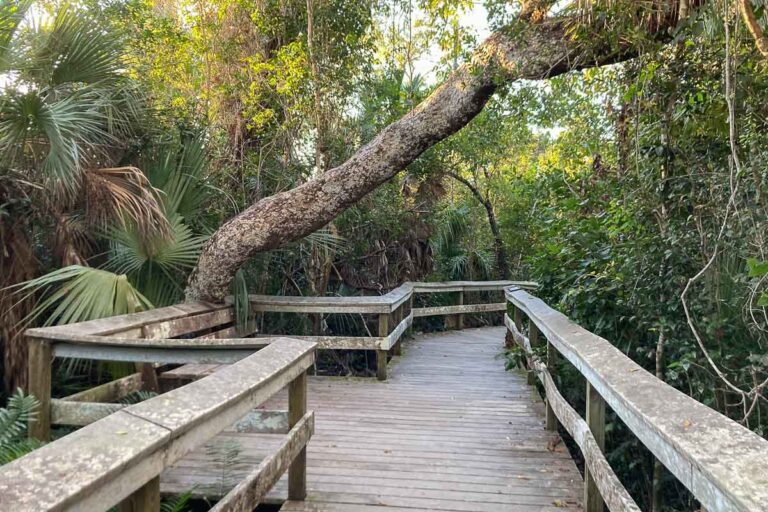

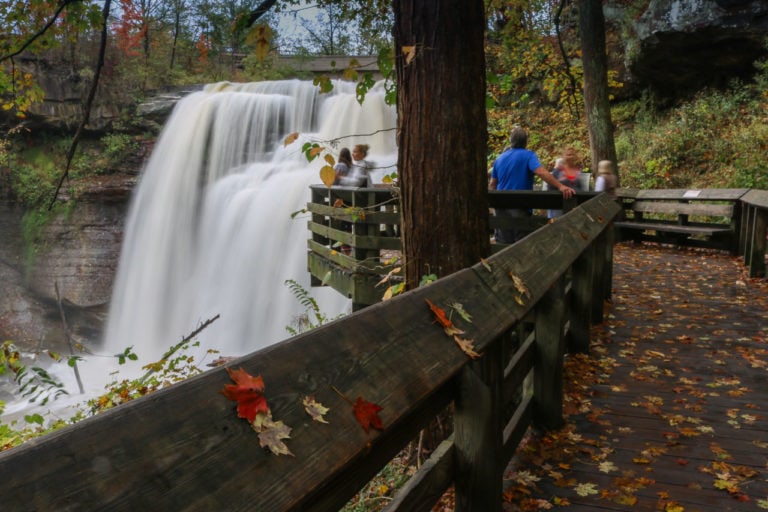
great view. i especially like the pic where you’re pushing the rock. 🙂
Hi Bram, glad to see you got some great weather on your camping trip to Acadia! And glad to see you got to hike some of Acadia’s historic trails. You and your readers might be interested in our recent blog post on Bubble Rock: http://acadiaonmymind.com/2014/07/bubble-rock-acadia-national-park/ Happy trails to you!
Also meant to say I just came across your blog as result of your post on the Acadia National Park Community Facebook page. Will be following your blog and hope you’ll consider doing the same with ours, http://www.acadiaonmymind.com. Thanks!